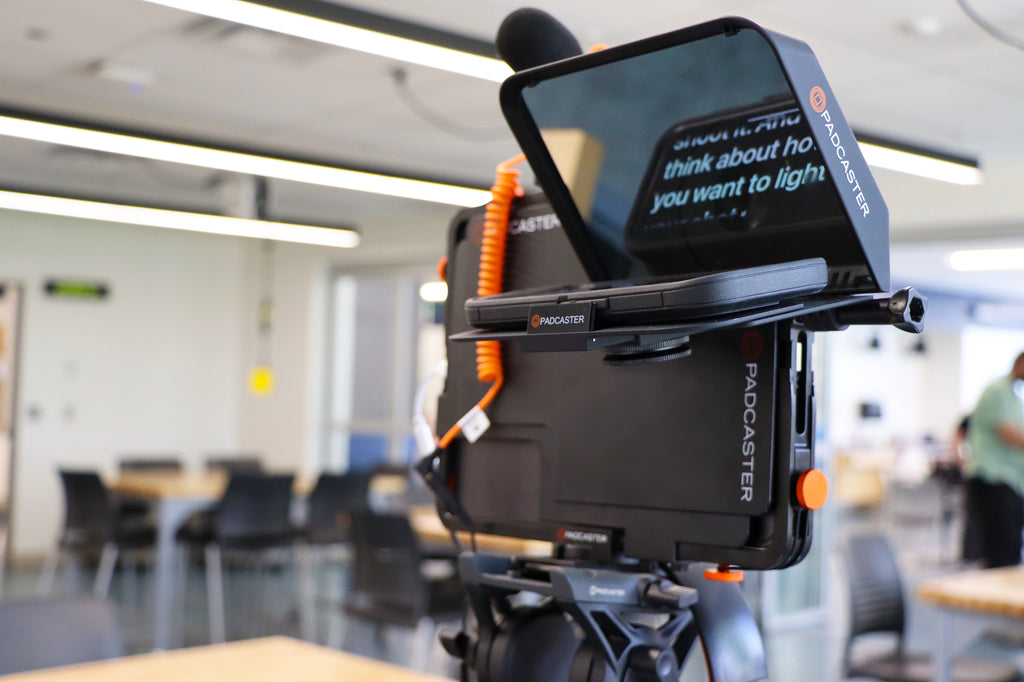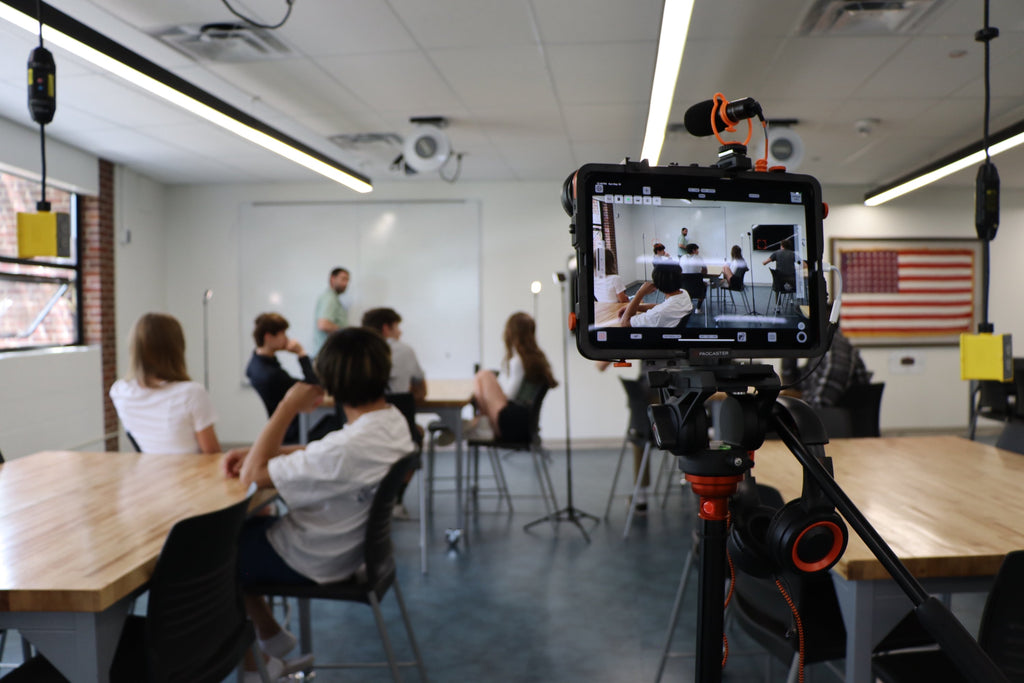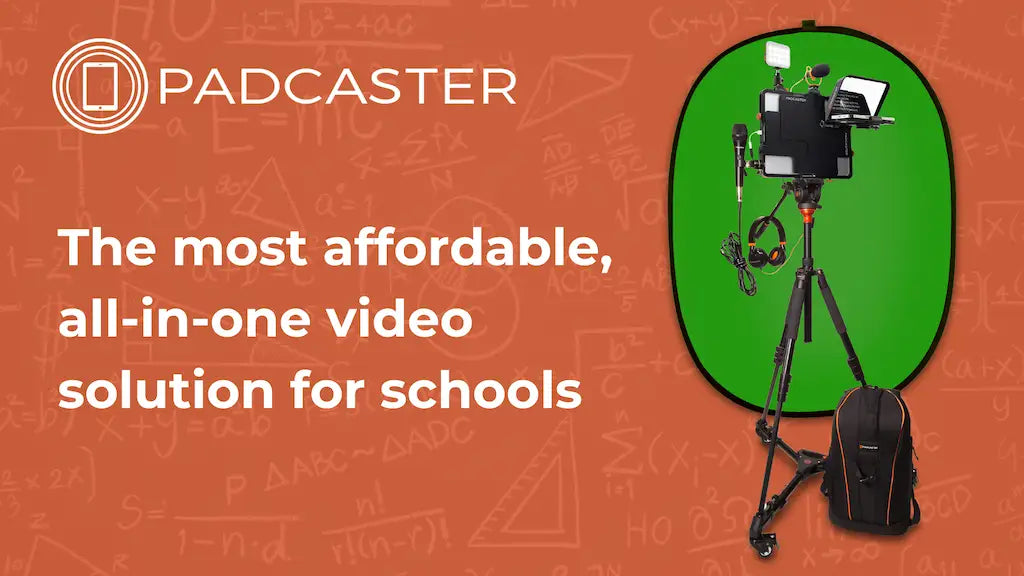
The weather report is a crucial part of any broadcast! These tips will help take your students from aspiring meteorologists to professionals.
WATCH PROFESSIONAL WEATHER REPORTS: What better way to teach students how to report on the weather than show them how the professionals do it? One assignment idea is to task students with watching the local weather report and writing down their feedback; both positive and negative. Ask your students questions such as:
- What did you see the reporter do or say that you liked?
- Can you use any of the tactics you liked in your own weather report?
- What stood out to you about the reporter’s body language?
- How do you think the reporter could improve?
COORDINATE WITH THE MATH & SCIENCE CURRICULUM: This is a great cross-curricular opportunity! If the students that report on the weather are not the same grade level as the students that study weather in Science class, have the weather reporter interview another student who is studying weather. There is also a lot of Math involved with reporting on the weather, particularly statistics when discussing averages and records!
EXPERIMENT WITH GREEN SCREEN TECHNOLOGY: You don’t need a professional studio to have fun with green screen! Affordable options include; painting a wall green, creating a DIY green screen with paper from a craft store, or purchasing the portable Padcaster Pop-Up green screen kit.

REPORT ON OTHER PARTS OF THE WORLD: While the primary focus should be on the local weather, give student meteorologists the opportunity to cover weather events in other parts of the country or even the world. This is especially useful if you live somewhere with very few weather irregularities. Students can even pretend to be reporting live from other parts of the world using green screen backgrounds of iconic international locations.
RETROSPECTIVELY REPORT ON MAJOR WEATHER EVENTS: Take a look back on historical weather events such as the Great Tri-State Tornado (1925) or Hurricane Katrina (2005). This is a great opportunity for students to practice their interviewing skills; have them interview older family members that experienced a major weather event or events that happened before the students were born.
DISCUSS RECORDS AND AVERAGES: In addition to simply stating the projected weather, have students put the weather in context by researching and talking about statistics such as records and averages. For example, “today might feel warm, but it’s actually ___ degrees warmer than the hottest day on record”, or “It’s ____ degrees warmer than the average temperature in July over the last five years”. You can also have students discuss how the average temperatures during any given year are changing. The best way to show how weather trends are changing over time is to discuss both records and averages together.

USE A TELEPROMPTER: The best way to get your students reporting like professionals is to have them use a teleprompter. Try running the free Parrot Teleprompter app on a phone or iPod touch! The Padcaster Parrot Teleprompter App can be used with or without the Padcaster Parrot Teleprompter hardware.
ALWAYS BE ASKING: “WHY DOES THIS MATTER?”: Why should the viewer care? The answer can be as simple as reminding the audience that they need to bring a jacket to school the next day, or as complex as the evolving local wildlife habitats. Either way, as reporters, students should train themselves to be thinking about “WHY” what they’re reporting on matters.
CONSIDER CREATING “BONUS CONTENT”: If you or your students are really excited about weather and want to do more reporting, don’t limit yourselves to what you have time for “on air”! Students can create ‘bonus content’ to share on the school’s social media channels.

PRACTICE MAKES PERFECT: In this case the cliche is true - practice really does make perfect. Have students practice giving the weather to one another before you even turn the camera on. Once they’ve practiced a bit and gotten comfortable, start rolling the cameras so the students can re-watch their report to learn from their mistakes.
Padcaster transforms your iPad or smartphone into an all-in-one mobile production studio so you can create professional-quality videos from or anywhere. Whether it’s for telecommuting, remote broadcasting or livestreaming -- Padcaster will help you produce high-quality content wherever you are. Fill out the form below to get in touch with one of our sales consultants!
Need More Information?
Fill out the form here to get in touch with a member of the Padcaster Team.


